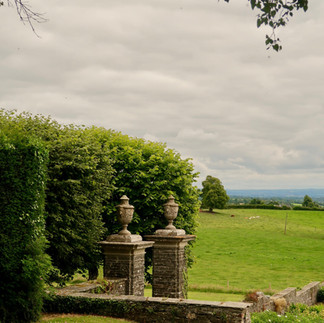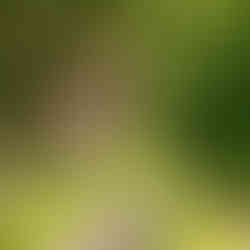This article was published in the Offaly Independent on Sat 24th July 2021 - full text and an additional gallery of images below. For other published articles click here.


Fans of the much-loved novel The Secret Garden will be utterly entranced by the 18th century Romantic landscape at Laois’s Heywood Gardens. A joyous place to spend a few hours, Heywood is one of the highlights of the Laois Garden Trail: for a relatively small county, it boasts a surprisingly high number of exceptional garden spaces which will appeal to adults and children alike.
Located in Ballinakill near Abbeyleix, Heywood Gardens is made up of over fifty acres of woodlands, lakes and beautifully maintained formal gardens with sweeping views across the Laois countryside. Dotted throughout the estate are a number of quirky architectural features and hidden passages which kids will take great pleasure in seeking out.
The estate came into being in the late 18th century when a grand house was built under the ownership of Frederick Trench. Sadly, the house is no longer in existence, having burned down in 1950, but the grounds will certainly give you a sense of stepping back in time. Inspired by his Grand Tour of Europe, he transformed the grounds of his home into the Romantic landscape we see today by the extensive planting of trees, the creation of a series of ornamental lakes and a series of follies including an orangery, a Gothic ruin and the so-called Sham Castle.
Your introduction to Heywood is the impressive Gothic-style Gate Lodge which marks the main car park entrance, and the route is well signposted throughout. Your first marker is the obelisk - a panel tells us that it served a dual purpose, both as a milestone marking distances to Ballinakill, Heywood and Dublin, and a memorial to Trench’s good friend Andrew Caldwell.

One of the loveliest spots to sit is Claude’s Seat on the outskirts of the park - follow the signs to the right through a peaceful woodland walk.

A Classical gazebo with round-headed arches, it is thought to have been named after the 17th century artist Claude Lorrain whose paintings featured similar structures. It has a built-in seat to take best advantage of its location: an arch frames a picture-perfect view of the lake with its covering of waterlilies, and the lush green landscape beyond.
Retrace your steps back through the woods to the focal point of the estate: the magnificent Lutyens Gardens. By the early 20th century, Heywood had passed into the hands of Colonel Hutcheson Poe. In 1906, he commissioned the renowned English architect and landscape artist Edwin Lutyens to design a series of interlinked formal gardens, in collaboration with Gertrude Jekyll.
Heywood is one of just four Lutyens gardens in Ireland and the only one outside of Dublin. A terrace offers panoramic views of the surrounding hills, the Slieve Blooms and a patchwork of green fields. From here, you can really get a sense of the vastness of the estate, looking down on the lake as it snakes through the grounds, surrounded by dense woodland. Flowers punctuate the terrace with bright pops of colour and the air is heavy with their gorgeous scents.
Follow the path towards two tall stone pillars and through the alleyway of pleached lime trees, woven together to form a living wall. On your left is a well-maintained stone wall with a series of decorative niches, while on the other side the trees give way to a delightful pastoral scene of verdant fields and rolling hills with the spires of a nearby church visible in the distance.
And now for the pièce de résistance… Pass through the ornate wrought-iron gates into the Oval Garden, considered to be one of Lutyens’ masterpieces. It’s a jaw-dropping sight, laid out in perfect classical symmetry over three levels.

A series of stone steps bring you to its centrepiece: a circular pond and fountain. Around the edge are eight bronze tortoises spurting jets of water into the pool below, while two stately stone lions guard their entrance at the back. The surrounding wall is punctuated with a series of circular openings, each one framing a picture-perfect view of the outer landscape.
Overlooking it all stands the striking arched loggia with its red roof tiles. On the wall is an inscription taken from the writings of Alexander Pope; a quirky feature is the stone bench held up by two strange winged creatures.
The garden is an absolute feast for the senses: flowers burst out of the earth in a riot of colour, scenting the air as you walk, and if you listen closely you’ll hear the bees busily at work. Kids will love all the little nooks and crannies with different levels to explore. A series of winding steps will bring you to an upper level which grants one of the best views of the garden and the surrounding landscape.
A signposted path through beech trees directs you to the bizarrely beautiful follies along the original driveway of the estate. You’ll pass the ruins of the Gothic-style orangery which functioned in its day as a hot house for growing fruit such as oranges. It’s believed that this was also one of the pleasure buildings on the estate, offering friends and family the opportunity to enjoy refreshments under the orange trees.

Further on, the Gothic Ruin and the Sham Castle are excellent examples of the type of whimsical follies which had become popular on grand country estates at the time. The Gothic Ruin was never meant to be complete, built to resemble the ruins of a medieval church. An exquisite tracery window is believed to be an original 15th century structure from the former friary at Aghaboe, a short distance away.
A larger second tracery window of a later date has a seat in front and was best placed for the Trench family to admire the views over the lake. Facing the ruin is the Sham Castle with four circular corner towers, and the triple-arch lancet window gives a glimpse into a modest interior beyond. It’s all strangely wonderful.
It’s free to visit and open until 9 pm during the summer months. See www.heritageireland.ie for further details





























Comments